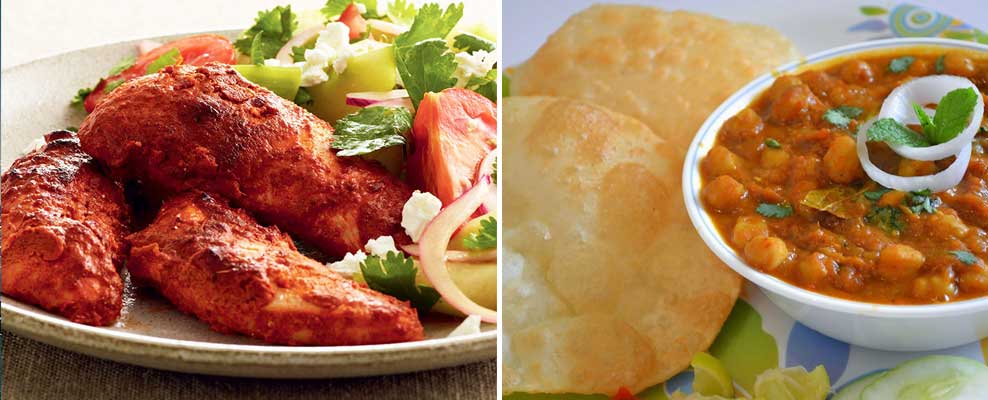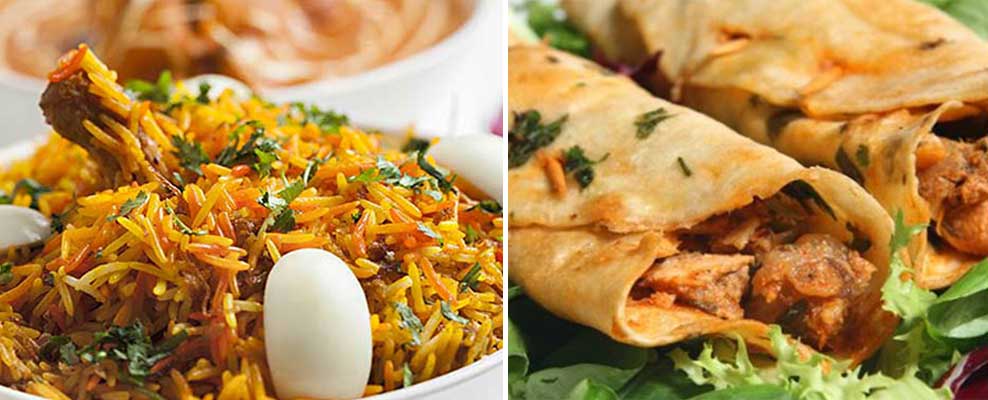It had been a time of great turmoil. There had been the Second World War, followed by the Partition and the Independence of India. What was then ‘Calcutta’, too felt the impact of the turbulent times. The British had ceased to be the rulers of India and had gone. There were still some who were staying-on, mostly in the corporate/business circles of the city. But it was not those who had gone but those who had come, who changed the course of the Culinary Stream of Calcutta. There was an influx of refugees from East Bengal, West Punjab, Sindh and the North West Frontier Province. These people brought with them different food-ideas and tastes to the city.
The decades of 1950s and the 1960s were game-changers and saw the introduction of new tastes and the birth of eating places which went on to become historical icons in the Food World of the City and far, far beyond.

What were these course-changers? Perhaps the most important was the introduction of the Tandoori Cuisine. It is generally believed that this historical ‘gift’ to Calcutta was given by Kwality – the people who had also taught India the Restaurant Business since the late 1930s (?). Along with the Tandoori, Kwality also heightened the Ice Cream Culture in Calcutta. I remember eating my first ice cream-in-a-cup, pioneered by the Kwality people, in 1949, in Lucknow. It was a Vanilla Ice Cream, but the difference was not only in the texture, but also the novelty of eating ice cream out of a paper cup with a small wooden spoon. By the early 1950s, Kwality had become famous – in Calcutta, Delhi, Lucknow, Dehra Dun and other places – not only for their ‘ Cholle Bhature’ but also for its ice creams, especially ‘Tutti Frutti’. Kwality is still an icon under the ever-watchful eyes of ‘young’ (he is in his 70s) Baldev Ghai and his son Rajiv. They are still fanatics about the highest possible quality of food in Kwality, but also have the distinction of being one of the few places – the only place (?) – in the upmarket restaurant-segment, where curries are cooked in one pot from start to finish. None of that Master-gravy-based imitations offered by most places here. All strength to Baldev Ghai and his Kwality Team. May they continue to be an island of culinary-excellence in the city, amidst the vast sea of mediocrity-or-worse. I am told that where the Park Street Kwality is now located, there used to be an Armenian restaurant named ‘Pax’.
If Kwality became a benchmark and zoomed in popularity, it was soon challenged by a number of restaurants which – over time – carved a deserved place in the taste buds of the locals and visitors alike.

Mocambo, designed by a German, Messershcmitt, went on to become extremely popular. This Messershmitt had nothing to do with Willy Messerschmitt, the designer of the famous German Me 262 and Bf 109 fighter aircraft which played a very important role in the Second World War. Dishes like Fish Diana, Chicken a la Kiev and Devilled Crab have – till today – been some of the great favorites. But Messeschmitt did go on to create s Culinary Mega-bomb – Sky Room. This place not only zoomed to immense popularity, but became iconic. Its demise, decades later, was mourned like the loss of a favorite son. Those who ate there still talk – with stars in their eyes – about what they ate there, especially its Prawn Cocktails.
Then there was Amber in Waterloo Street, which also acquired a huge following due to its exceptionally good North Indian/Tandoori food. It has been popular with three generations.
By the 1960s/1970s/1980s, Kolkata appeared quite set in its tastes. Peliti was gone. Firpo was on a downward incline, leading to its tragic closure. The food outlets of the Great Eastern had also lost their sheen. Polynesia at the Oberoi Grand was the most popular – and expensive – hotel restaurant. Park Street and its adjoining areas had become the culinary hub of the city. Among the most popular places were: Kwality, Trinca, Blue Fox, Olympia, Mocambo, Peter Cat – ( named after a famous cat which hung around a place at the Lords cricket ground in London) still famous for its Chelo Kebabs, Moulin Rouge, Magnolia, India Hobby Centre, Bar-B-Q, Shehnaz, Waldorf, How Hua and Oasis. Huge culinary waves were created by late Chef Avtar Singh, who presided over the production of some of the best kebabs that Kolkata has ever tasted, at The Astor on Theater Road.

In the early 1980s, a tiny place inside the Attikon Bakery on Free School Street – Supersnax – was a rather unique oddity. Except its – unique at that time – food (Soups, Salads and Sandwiches – each a meal by itself), everything else was ‘wrong’. There were no chairs or tables, one had to sit on the floor. There was no pre-cooked food. One had to wait patiently – often sweating due to power-cuts – for your food to be prepared. Yet, it became very popular, very soon. It was the first food place to be written about in The Telegraph after it commenced publication. The Lonely Planet guide had more space for Supersnax – based entirely on the recommendations of those from all over the globe who had eaten there – than most eating places in the city. The menu had to be expanded soon on the demands of many regulars and there were the largest glasses of Banana Lassi, Yoghurt-fruit-honey-nuts preparations, Nutkhuts (Rabri and Nuts), Omrolli (Stuffed Omelets) and the toasted Peace Bombs – ‘Peabees’ (Buns stuffed with meats and cheese). Though it had a life span of just two-and-a-half years, it is still remembered by many. I plead ‘guilty’ to have run this place.

There were some hugely popular eating places away from the Park Street zone also. The Dhaba at Ballygunge Phari and Azad Hind Dhaba on Ballygunge Circular Road (famed for a painting of Madhuri Dixit done by M.F. Husain on a wall) had/have their loyalists. The oldest (?) still-running restaurant in the city, the Royal Indian Hotel in Chitpore has always attracted a big following. In the New Market/Esplanade/Chandani/Central Avenue area the popular paces included: Kathleen, New Cathay, Nizam, Aminia, Karco, Regent, Badshah, New Aliyah, Sagar, Chung Wah, Eau Chew, and Sabir (inventors of the ‘Rezala’). In the Park Circus area, there were Rahmania, Shiraz and Jimmy’s Kitchen – to name a few. Also worth a mention is South Pole in Gariahat, serving some of the best Kosha Mangsho and Parathas in town, for a long, long time. At that time if you said “Kosha Mangsho,” It had to mean the delicious, hot-and-spicy, dark brown stuff served at Gol Kuthi (New Punjab Restaurant?) in north Kolkata.
The opening of The Taj Bengal in October 1989 was a catalyst and a game-changer. What happened? Next instalment of ‘Chef and the City’.
